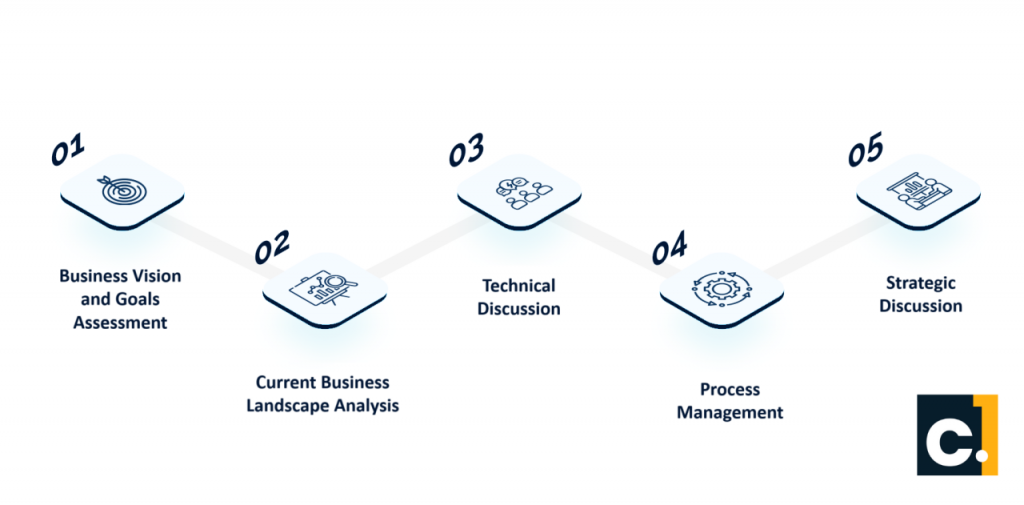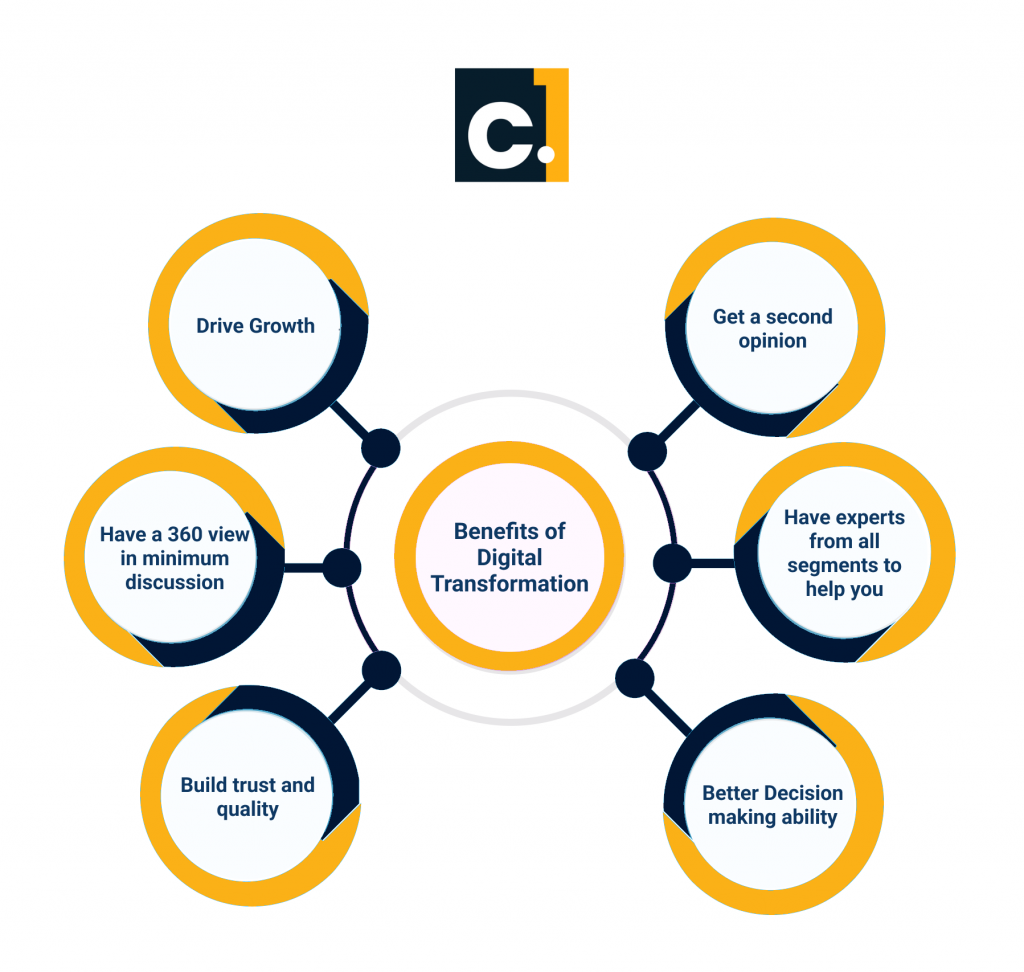With the rapid emergence of new technologies, the contemporary truth is that the marketplace is changing for every industry faster than ever. In this scenario, digital transformation has become inevitable to stay at par with the market standards and scale your business. The predicted compound annual growth rate (CAGR) for the digital transformation market is 23%, which means it is expanding rapidly.
Digital transformation is here to change your technical processes.
A digital transformation partner can work hand in hand with you throughout the entire journey—from understanding your business goals and vision to proposing tailored solutions and developing a comprehensive digital transformation strategy. With a consultative, customer-centric approach, your digital transformation partner should offer solutions ranging from standalone bespoke development and managed services to building connected ecosystems across the enterprise. By leveraging emerging technologies like AI, blockchain, and hyper-automation, along with digital engineering services, they enable the creation of smart systems that support continuous and consistent digital transformation across your organization.
Some examples of digital transformation are:
- Cloud Computing Adoption: Companies transitioning from on-premise data centers to cloud-based infrastructure and services. This enables cost savings, scalability, improved collaboration, and real-time data access from anywhere.
- Big Data Analytics: Leveraging large volumes of data to gain insights, make data-driven decisions, and improve customer experiences. This could involve predictive analytics, customer segmentation, and targeted marketing campaigns.
- Artificial Intelligence (AI) and Machine Learning (ML) Integration: Utilizing AI and ML algorithms to automate tasks, enhance customer support, optimize supply chain processes, and make data analysis more efficient.
- Mobile Apps and Mobile-First Approach: Businesses developing mobile applications to engage customers, offer mobile-centric services, and provide a seamless user experience across different devices. Businesses developing mobile applications to engage customers, offer mobile-centric services, and provide a seamless user experience across different devices.
- Telemedicine and Digital Health: Healthcare providers adopting telemedicine platforms to offer virtual consultations, remote monitoring devices, and electronic health records to improve patient care and accessibility.
- Agile and DevOps Practices: IT departments adopting Agile methodologies and DevOps principles to accelerate software development, reduce time-to-market, and increase collaboration between development and operations teams.
- Blockchain Applications: Implementing blockchain technology for secure, transparent, and tamper-resistant record-keeping and transactions. For instance, in supply chain management, financial services, and digital identity verification.
- Virtual and Augmented Reality: Companies using VR and AR technologies to train employees, create immersive customer experiences, and improve product design and prototype processes.
- Robotic Process Automation (RPA): Automating repetitive tasks and workflows using software robots to improve operational efficiency and reduce manual errors.
Steps to Digital Transformation
Let’s understand the steps involved in smoothly transforming technical processes in your organization.

Business vision and goals assessment – Every business has different outcome expectations regarding digital transformation. Thus, there is a need to decide the short-term and long-term business goals and objectives by assessing the business needs and creating artefacts that can be used to compare the existing and projected systems and processes.
Current business landscape analysis – You must evaluate your existing resources, technology, business processes, strategic gaps, competitive threats, operational challenges, customer satisfaction rates and expectations. Also, evaluate the current business (financial), human resources, performance, and technical capabilities. This is done more strategically after thoroughly reviewing the architecture, infrastructure, and processes. It also aids executive management by building skills through skill assessment and training for the staff and management.
Technical discussion – After identifying the go-to-market, your team needs to understand the tech debt based on reviews and test runs. The technical solution should consider the options available per your needs and their costs to ascertain if your organization has the purchasing capacity to acquire them. Create the technical roadmap that defines the solution and supports collaboration.
Process management – A detailed audit/review of the status, delivery scope, cost vs benefit, performance, issue resolution, and risk management helps create the standards for the central repository and technical library and identify the accelerators and architecture requirements. You must also consider any vulnerabilities that may arise from long-term financial hindrances.
Strategic discussion – Any transformation without the right strategy does not guarantee success. Identify the challenges and their solutions and communicate them to the team to ensure the business fully sees them. You may need to measure key metrics and make tough decisions here. For example, if your organization does not have the necessary resources and capacity, you may have to either scale back organizational goals and objectives or arrange the required resources.
A comprehensive and holistic digital transformation strategy based on audits can rebuild IT structures and modernize products using technological advancements. The strategy should prepare failover plans and be flexible and adaptable to the actual situation. It should help in proper operational activities during key junctures of the product lifecycle and implement automation technology to streamline repetitive and time-consuming business processes. You must determine which solutions match your long-term goals, accessible resources, and digital transformation strategy to select and analyze available technology.
How Cygnet.One Facilitates Your Digital Transformation

Cygnet.One takes a consultative, customer-centric approach to offer solutions ranging from standalone bespoke development and managed services to building connected ecosystems across the enterprise and developing smart systems by leveraging emerging technologies like AI, blockchain, and hyperautomation. Cygnet enables clients to crossover digital transformation challenges and move towards innovative systems through intelligent and automation-driven digital transformation. Learn how Cygnet.One’s technical due diligence and next-gen product engineering services can make your digital transformation journey seamless, and contact us without further delay.











